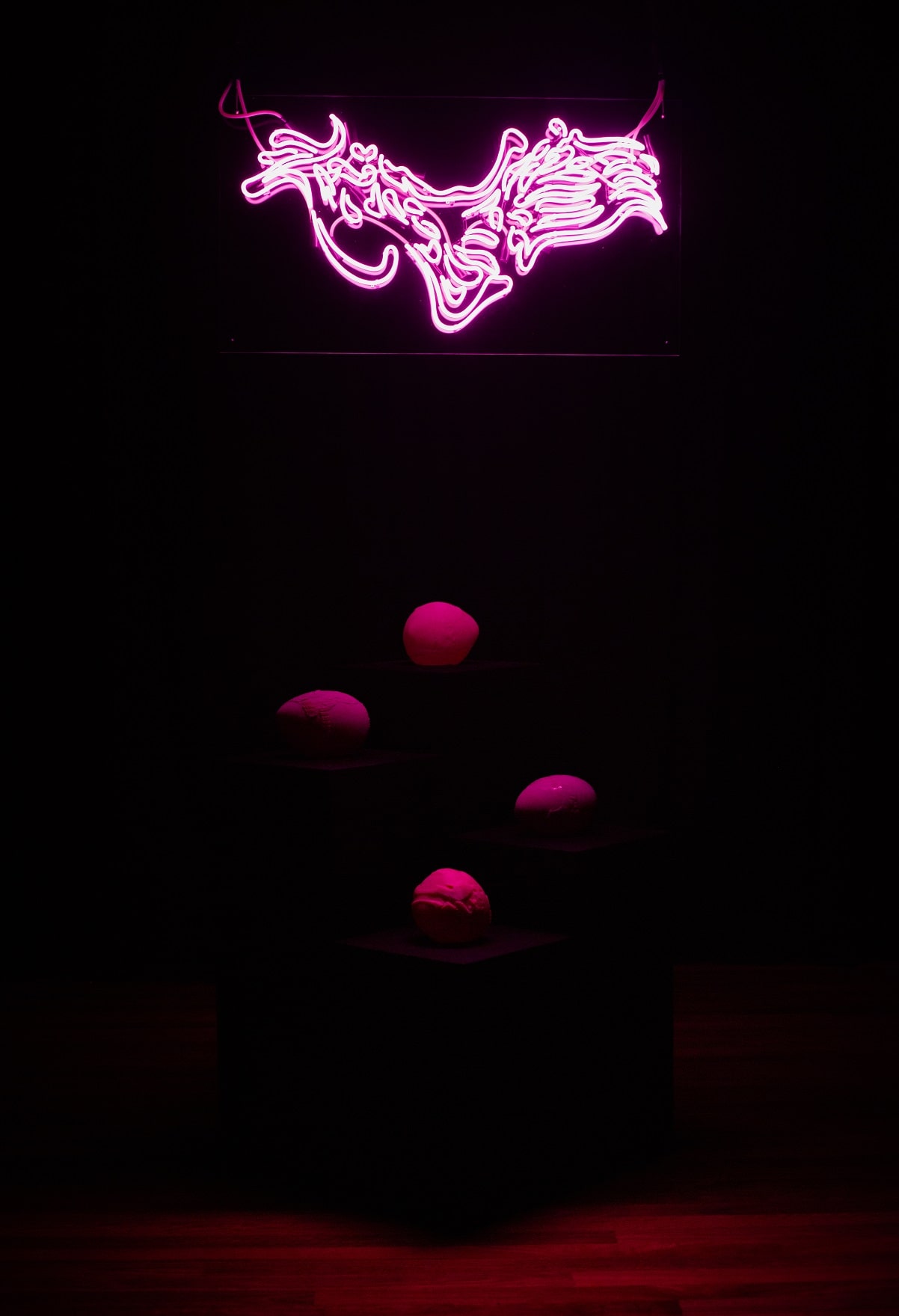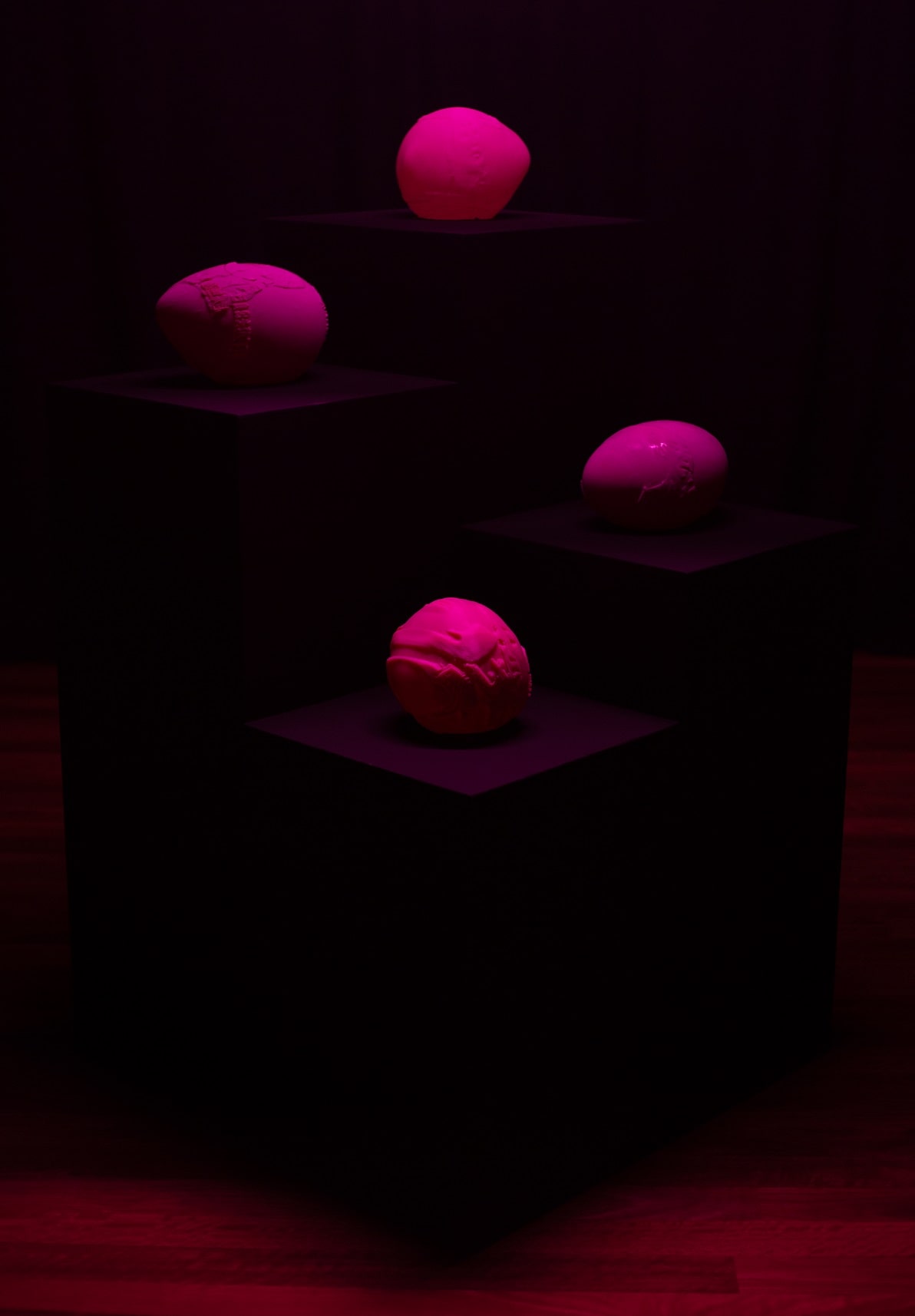
Sap 濕
Chun Yin Rainbow Chan 陳雋然
Sap 濕 by musician and interdisciplinary artist Chun Yin Rainbow Chan 陳雋然, is an audio-visual installation designed in the digital and replicated in the physical. The work contemplates the intimate ties between love songs, cultural memory, and identity formation.
Sap 濕 draws upon recollections of Rainbow’s childhood after migrating to Australia with her family in 1996. It also pays homage to the legendary Taiwanese singer Teresa Teng. A feeling of temporal displacement pervades Sap 濕, haunted by a desire to belong to a past and future that never existed.
In this work Rainbow contemplates the myth of karaoke subtitles, intended as a guide to lead audiences through the lyrics and story of a song. But what feelings do the seductive scrolling neon text elicit when you are unable to read the lyrics of your mother-tongue? As the glowing text unfurls, so do feelings of shame, alienation and yearning. Rainbow amplifies this tension by reimagining the lyrics “在哪裡” (which translates to “where” or literally “at what place?”) in Teresa Teng’s song 甜蜜蜜 (Sweet On You.) Rainbow takes the original karaoke text and digitally manipulates the script until it is no longer legible. The text dissolves into a pseudo topographic map to navigate the diasporic psyche.
Read Artist Statement
There is a saying that, “Wherever there are Chinese people, Teresa Teng’s song can be heard.” In Sap 濕 I explore this sentiment, contemplating the intimate ties between music, cultural memory, and identity formation. For this work I have drawn upon recollections of from my childhood after immigrating to Australia from Hong Kong in 1996. It also pays homage to the legendary Taiwanese singer Teresa Teng, who tragically died of an asthma attack in 1995, aged 42.
Echoes from my past coalesce into a disjointed present. I recall my mother cooking and humming along to Teresa Teng, reluctantly attending Chinese-language school on Saturdays, Grandma’s cassette mixtapes and handwritten letters from Hong Kong, the cheap-sounding reverb on karaoke mics. I have repurposed fragments of Teng’s bittersweet lyrics into a hypnotic soundscape, using the pull of nostalgia to illuminate the diasporic psyche.
Read Artist Statement
There is a saying that, “Wherever there are Chinese people, Teresa Teng’s song can be heard.” In Sap 濕 I explore this sentiment, contemplating the intimate ties between music, cultural memory, and identity formation. For this work I have drawn upon recollections of from my childhood after immigrating to Australia from Hong Kong in 1996. It also pays homage to the legendary Taiwanese singer Teresa Teng, who tragically died of an asthma attack in 1995, aged 42.
Echoes from my past coalesce into a disjointed present. I recall my mother cooking and humming along to Teresa Teng, reluctantly attending Chinese-language school on Saturdays, Grandma’s cassette mixtapes and handwritten letters from Hong Kong, the cheap-sounding reverb on karaoke mics. I have repurposed fragments of Teng’s bittersweet lyrics into a hypnotic soundscape, using the pull of nostalgia to illuminate the diasporic psyche.





